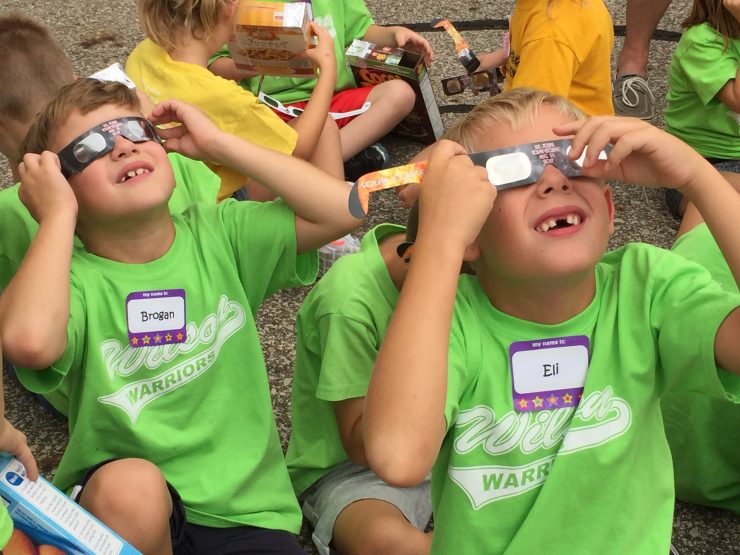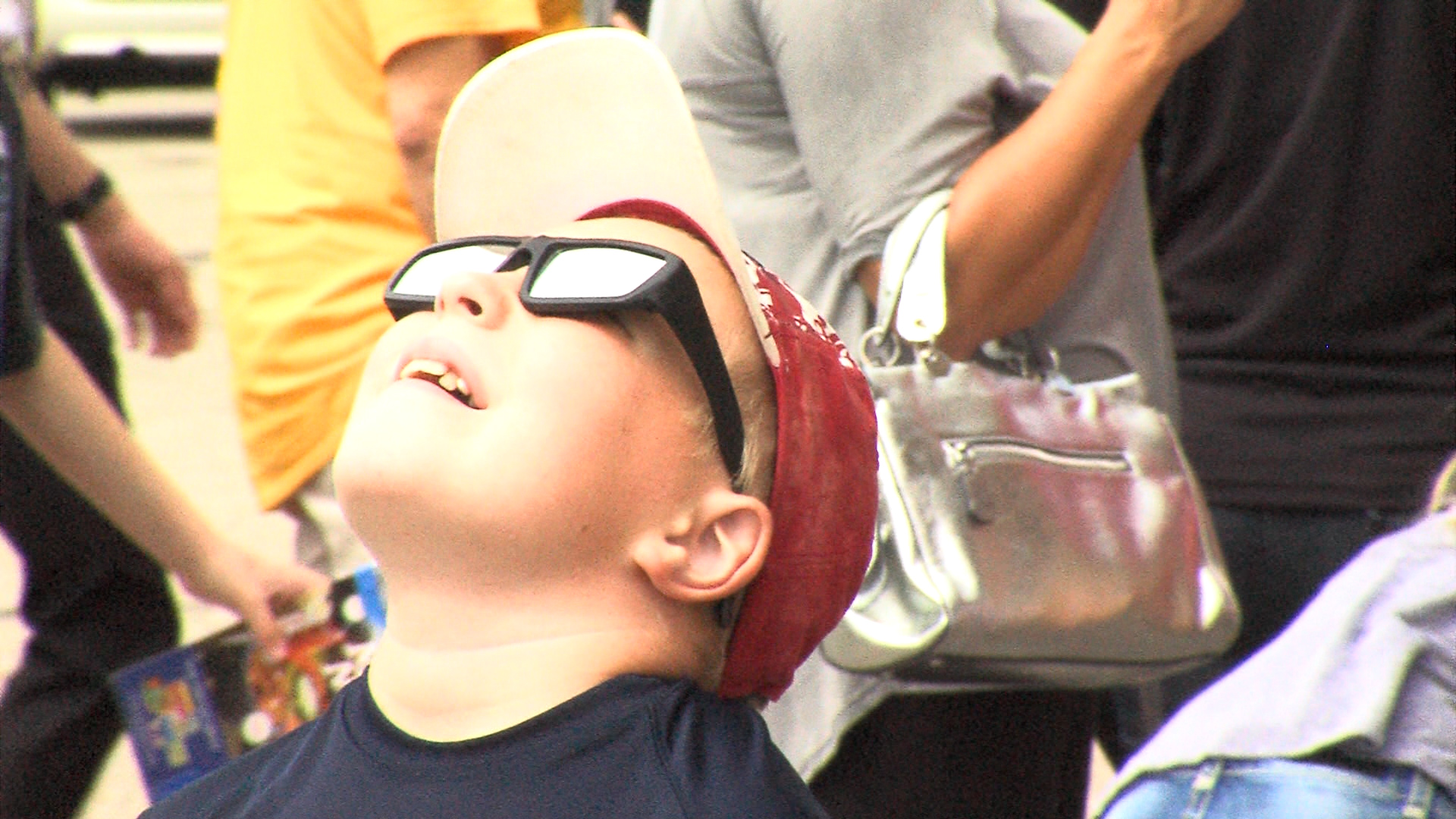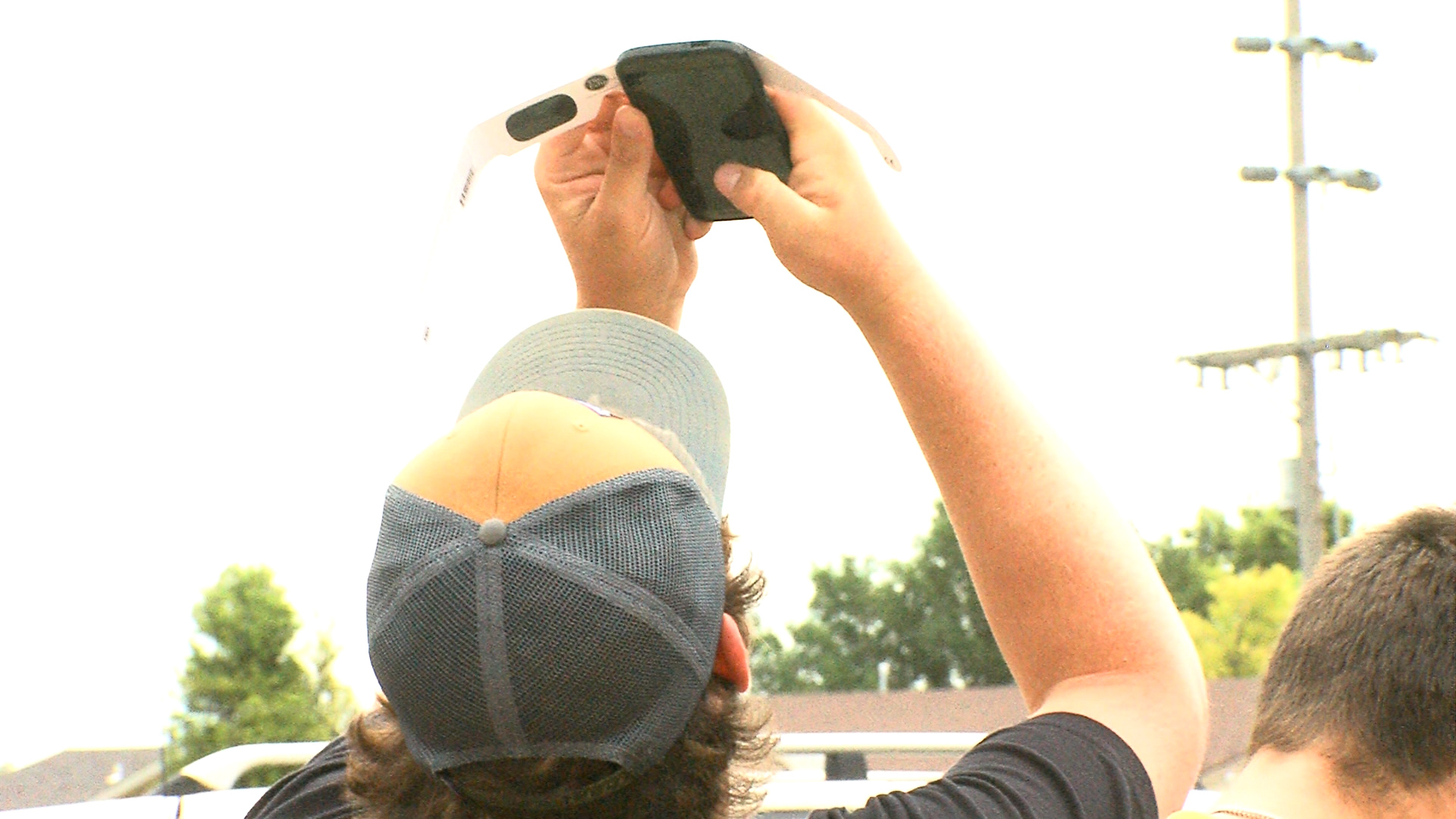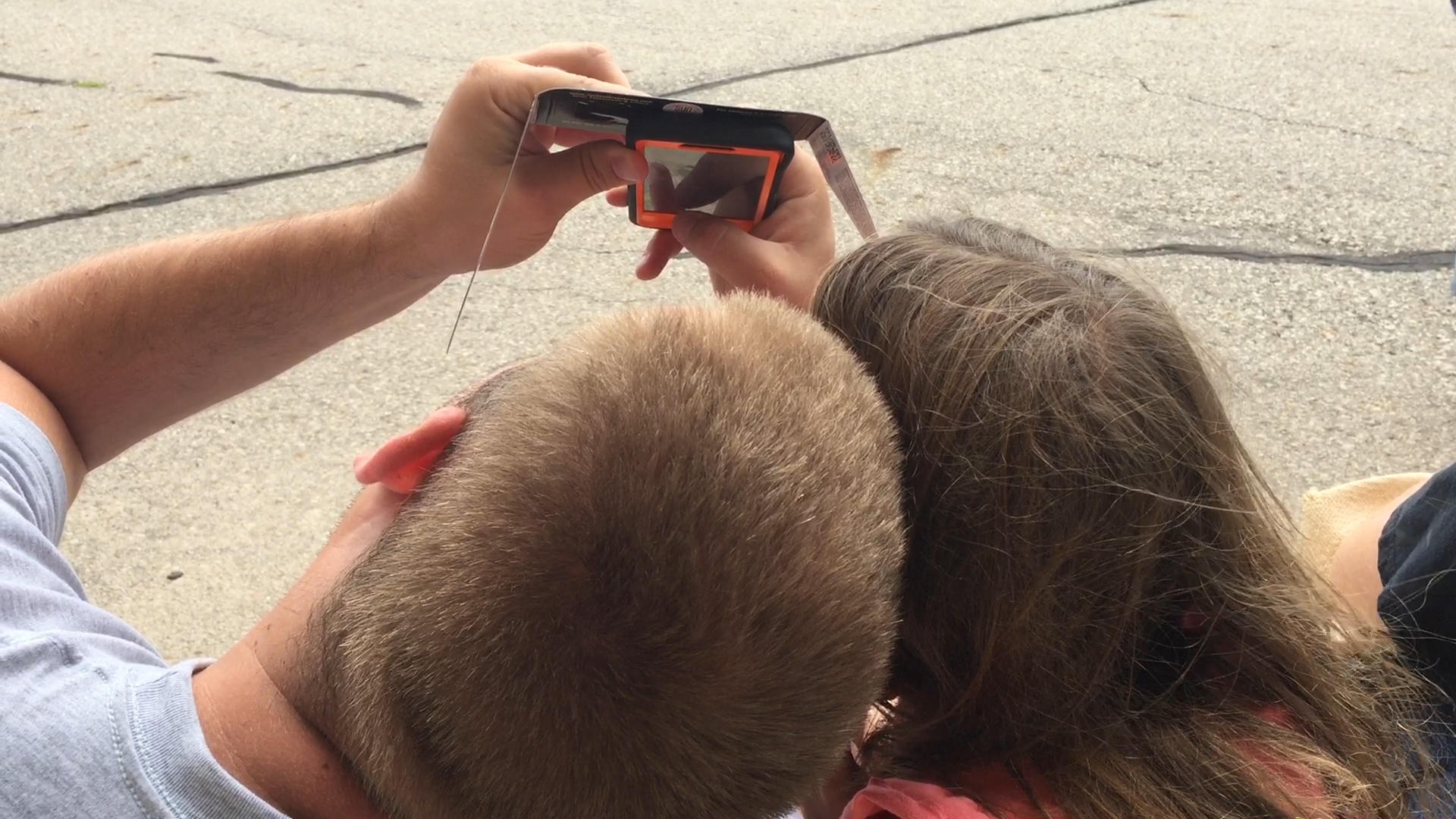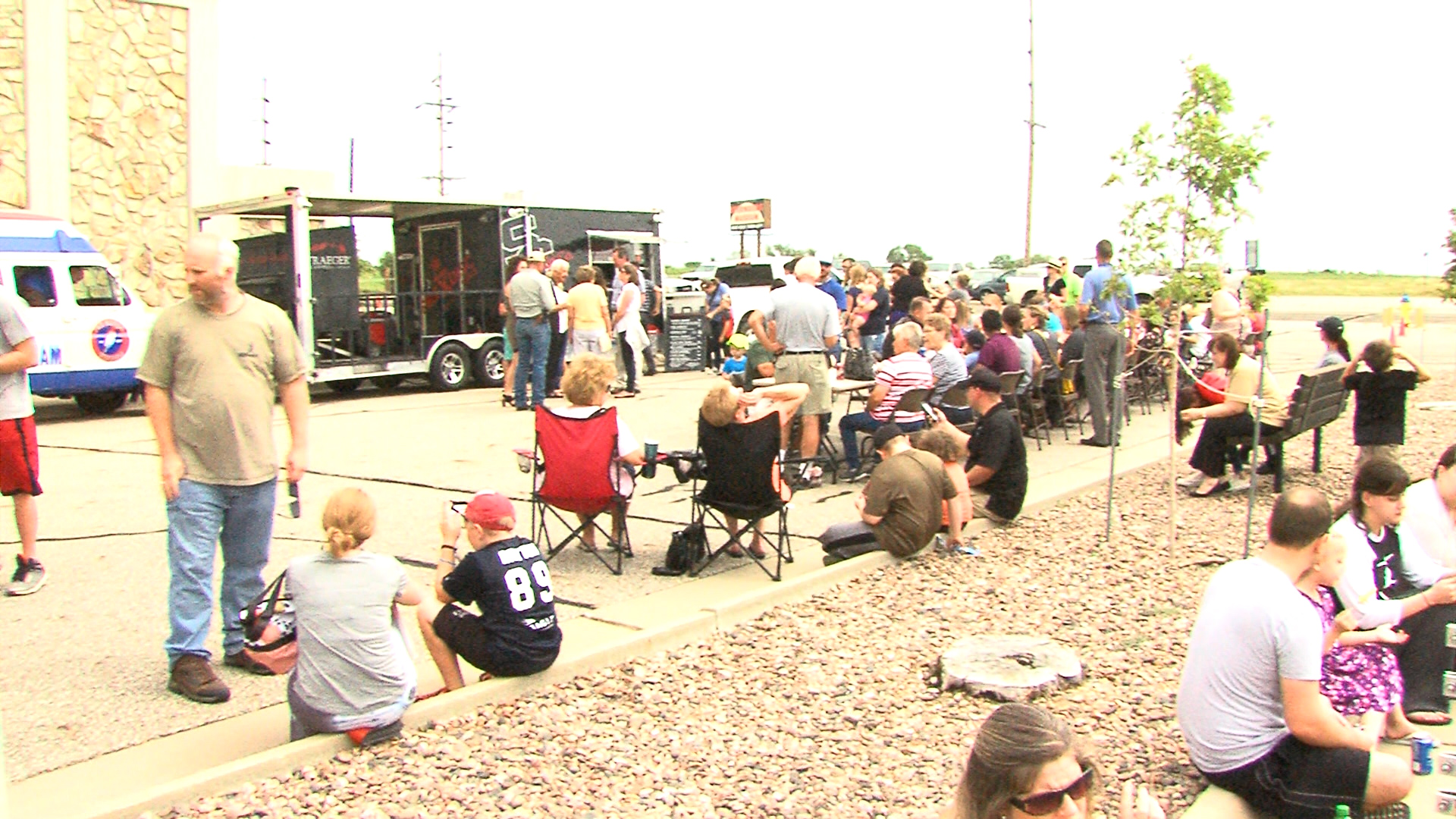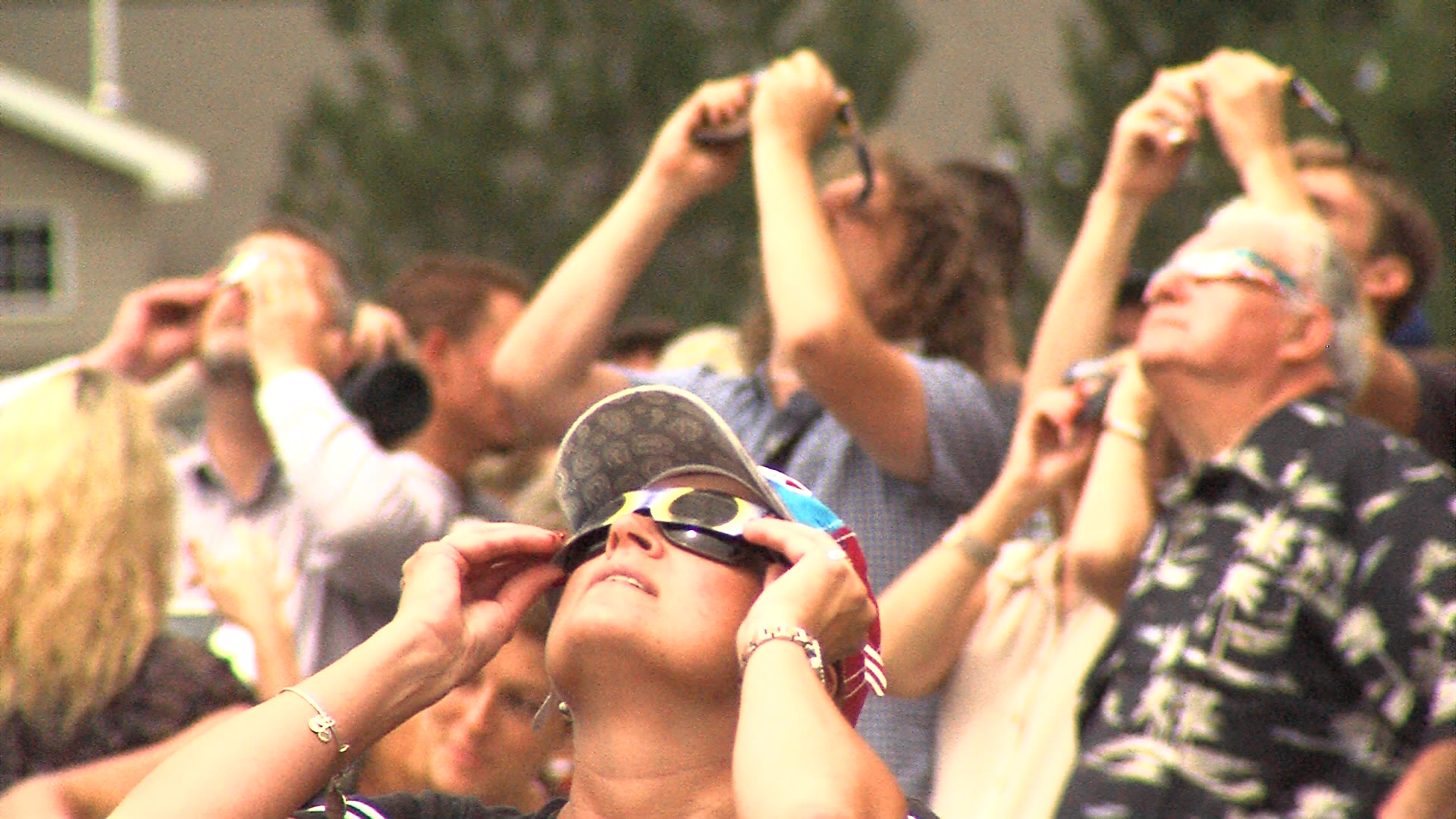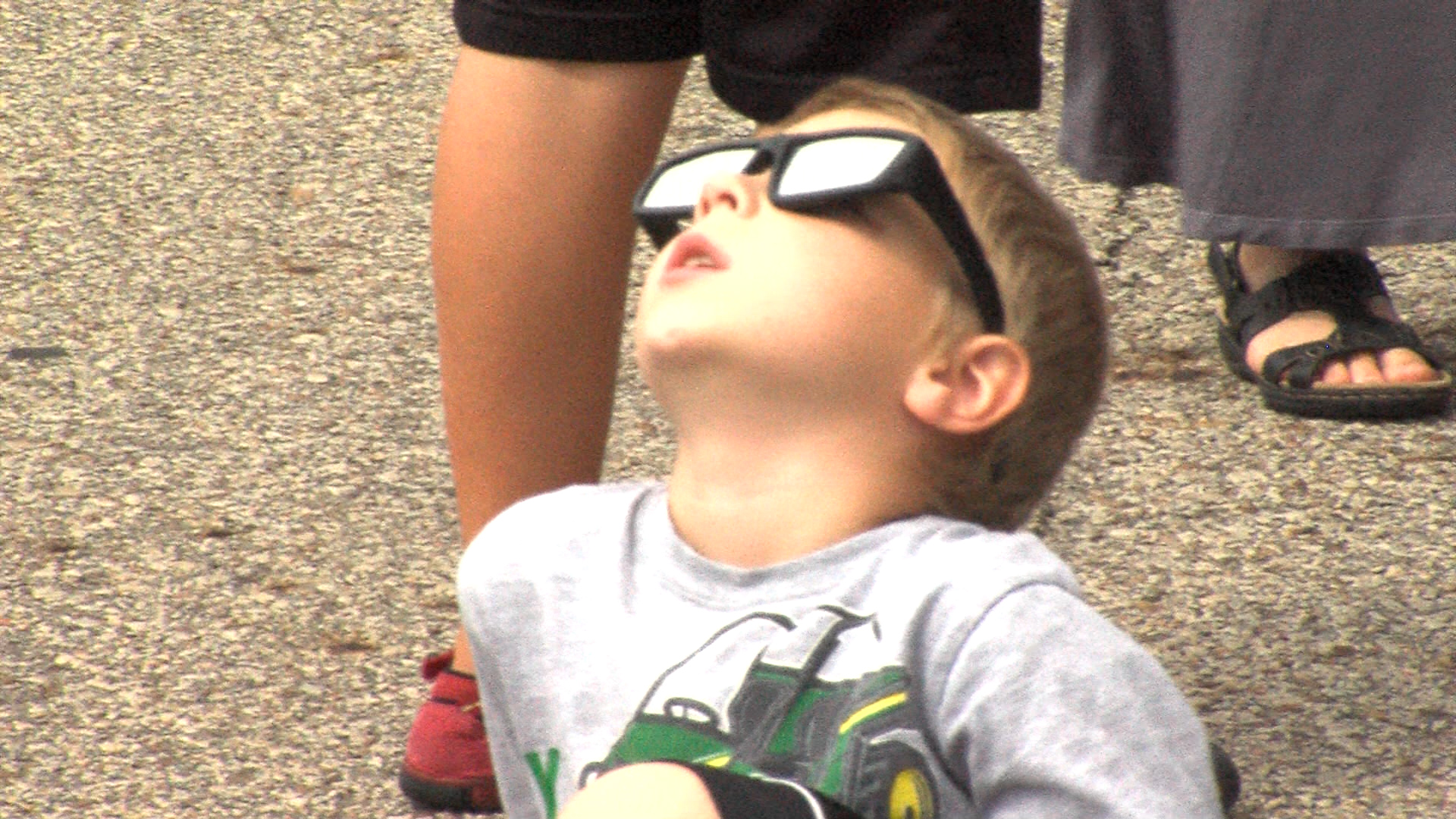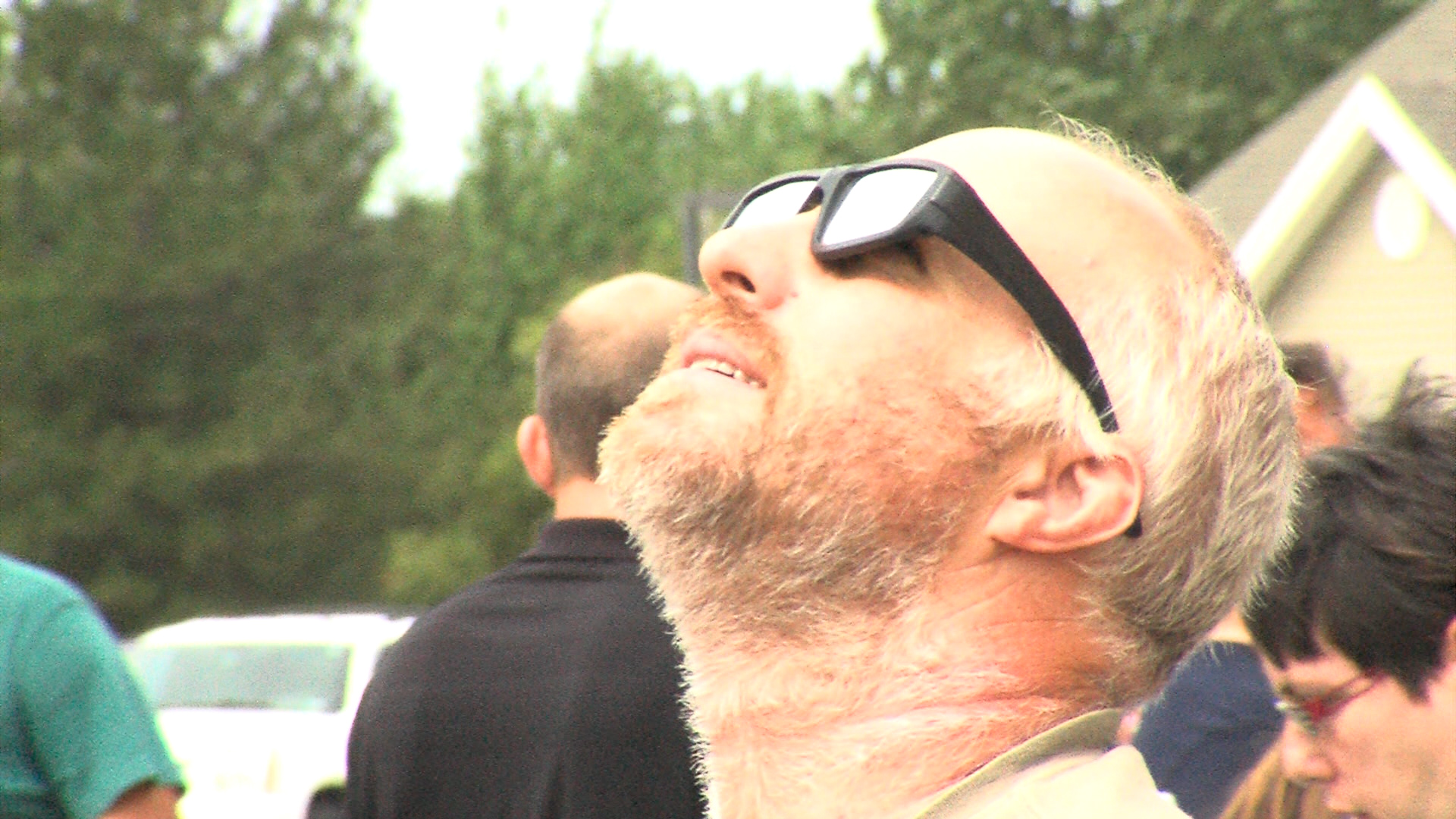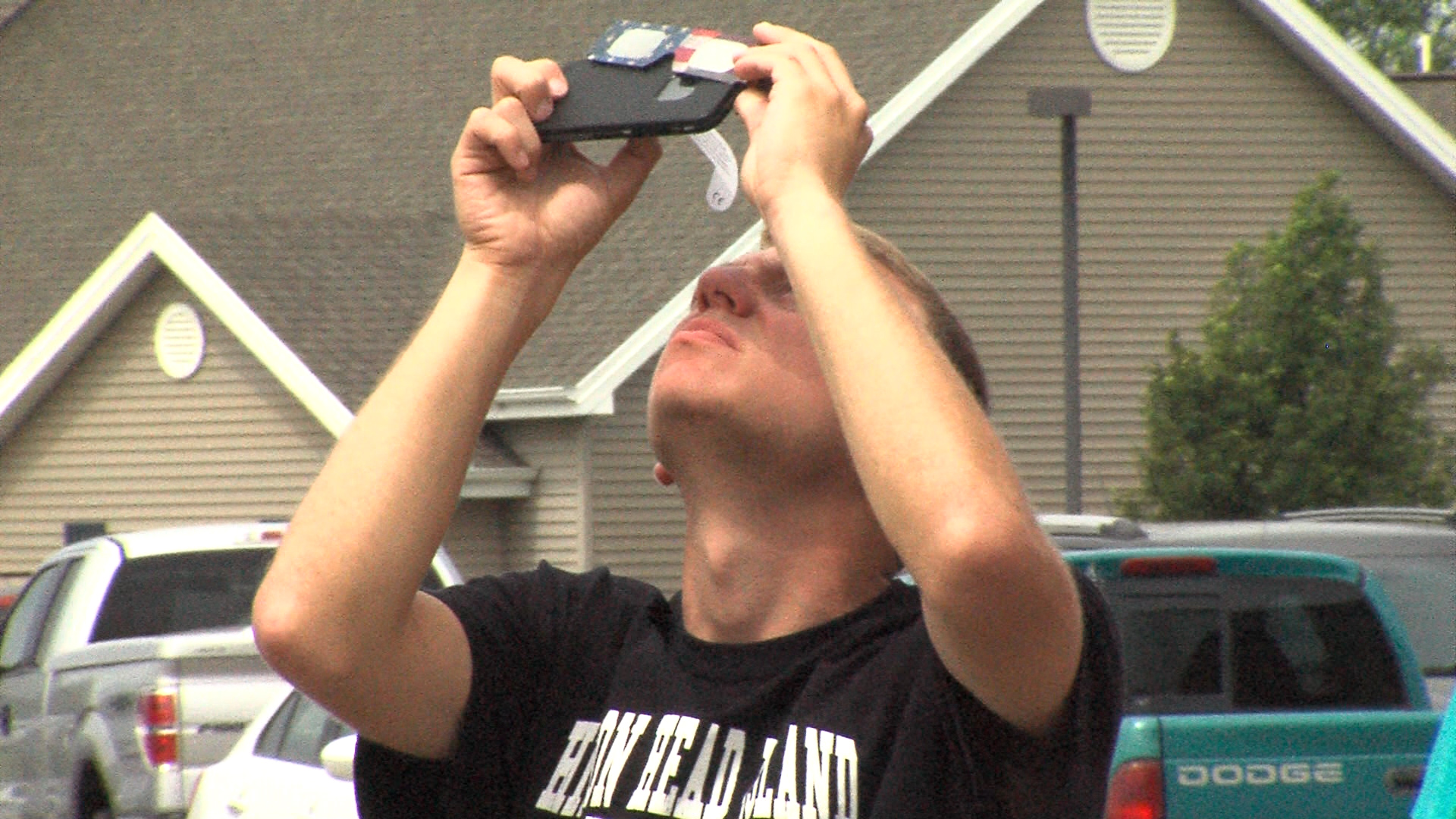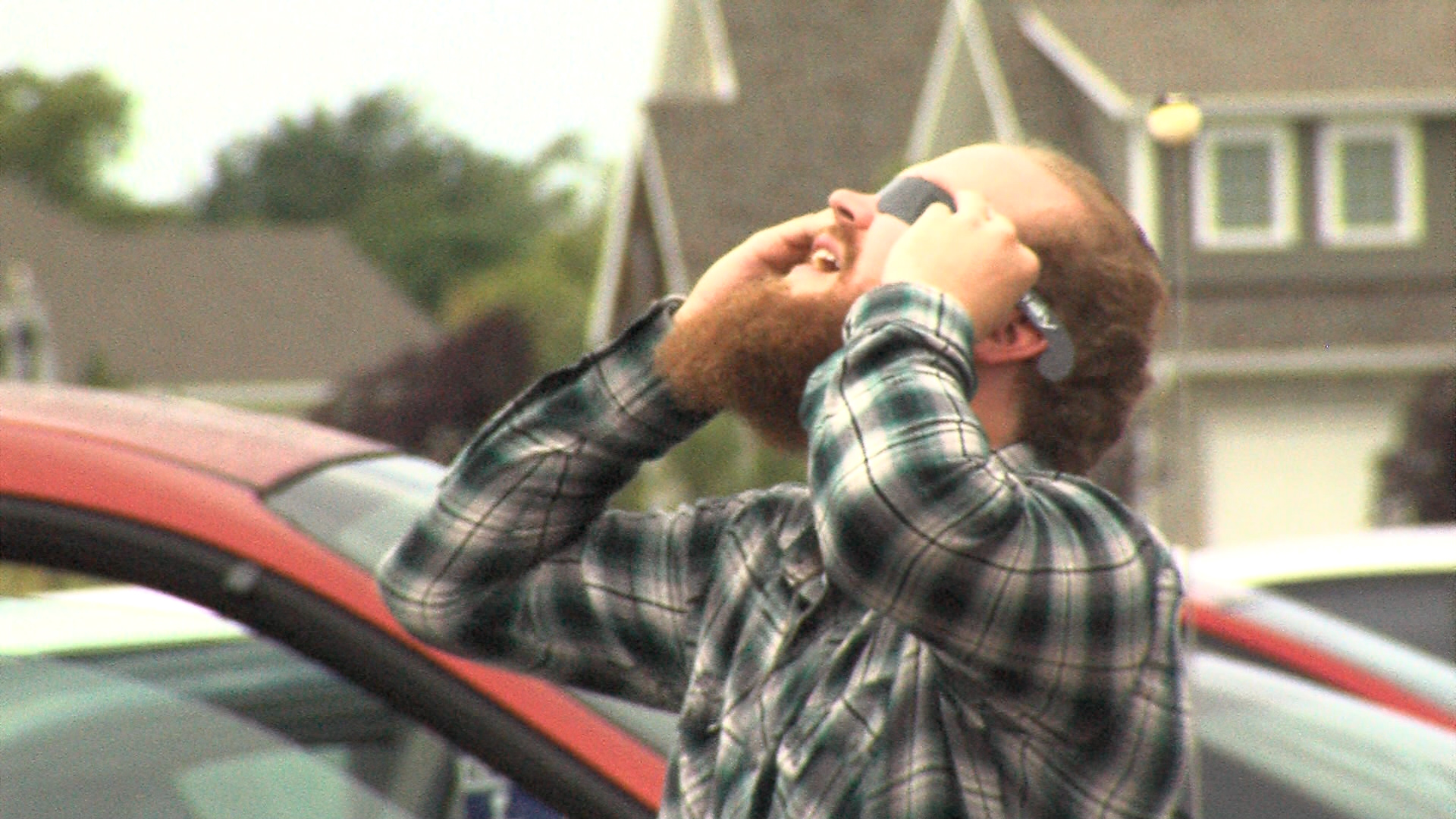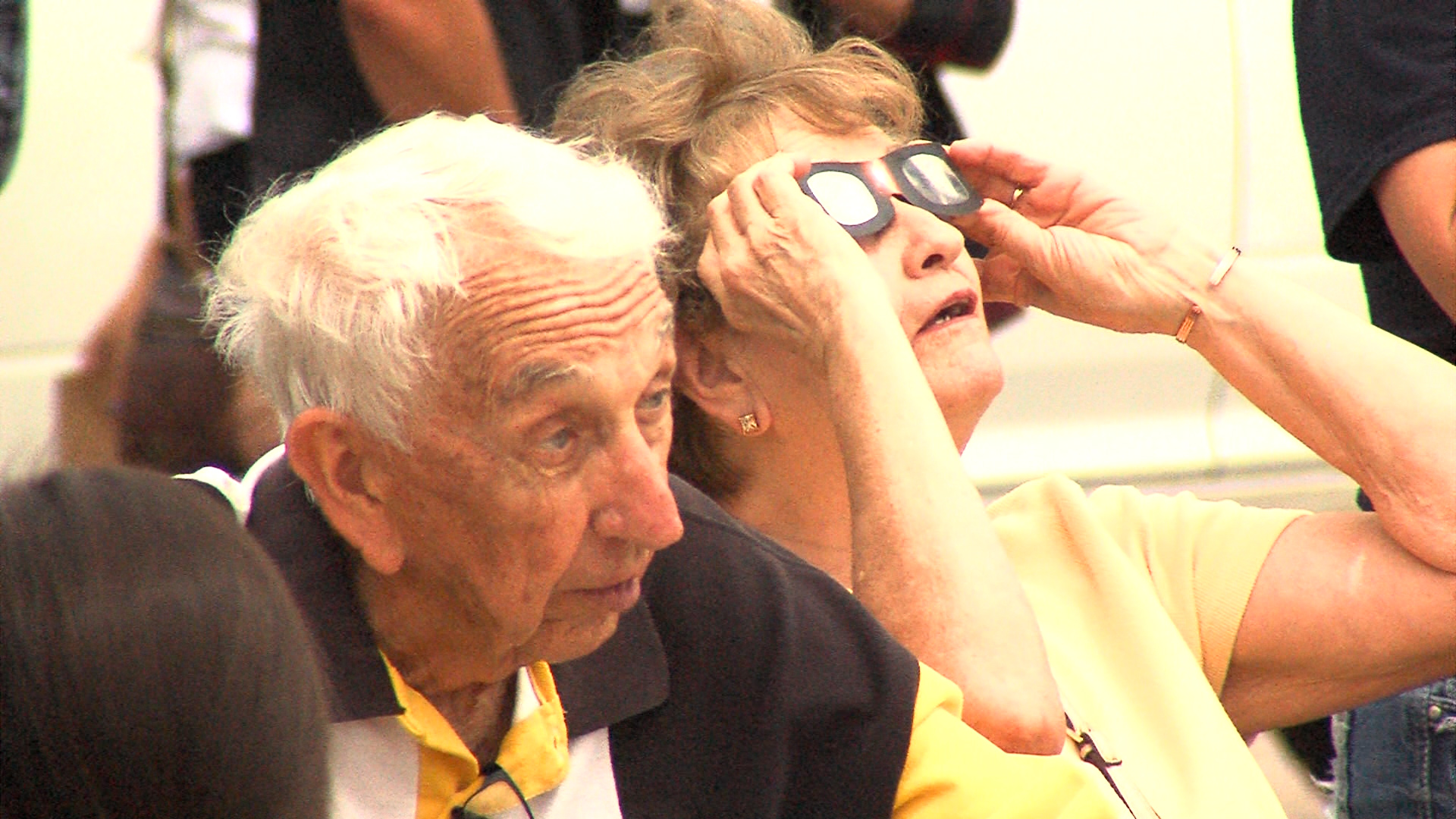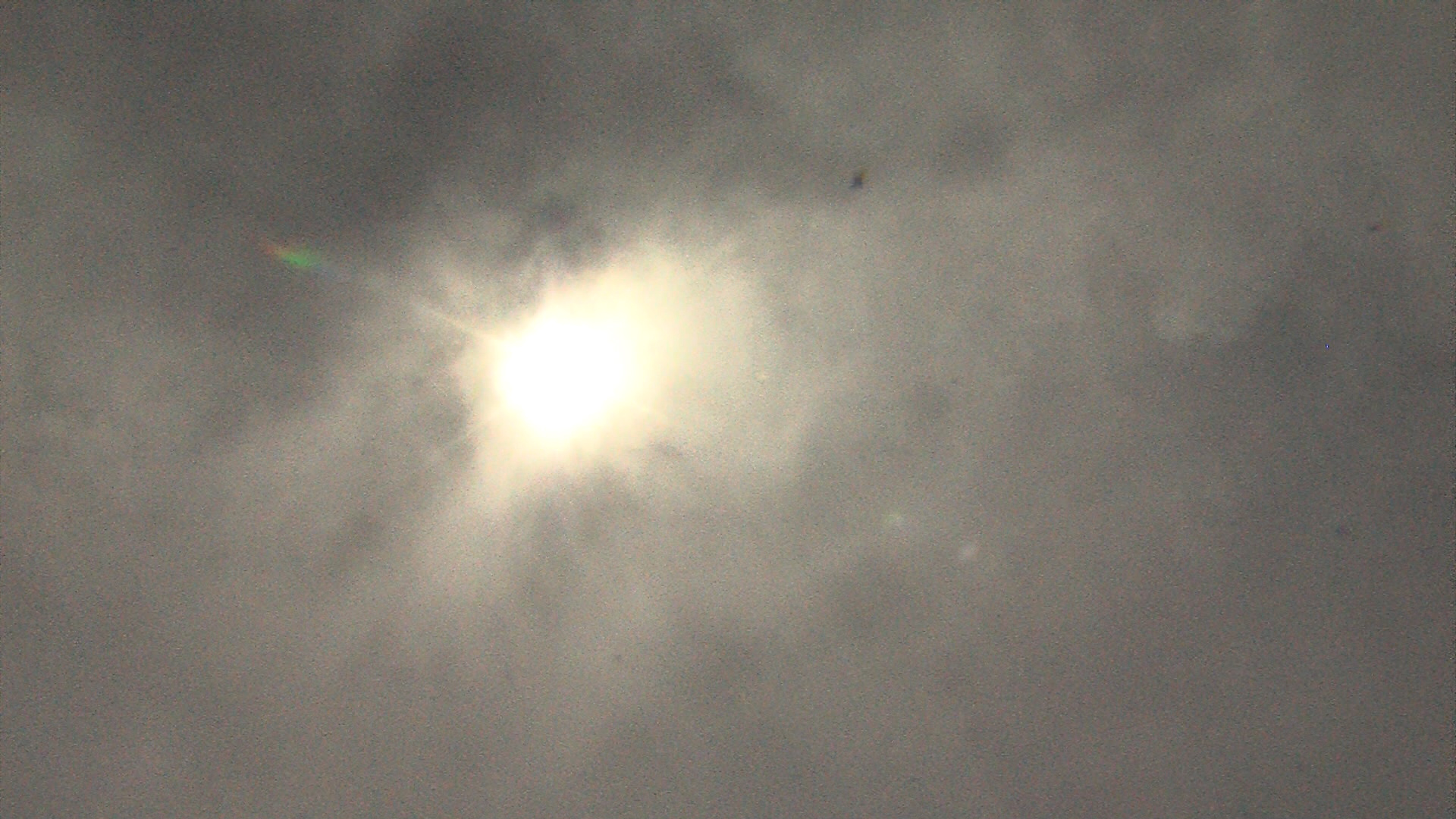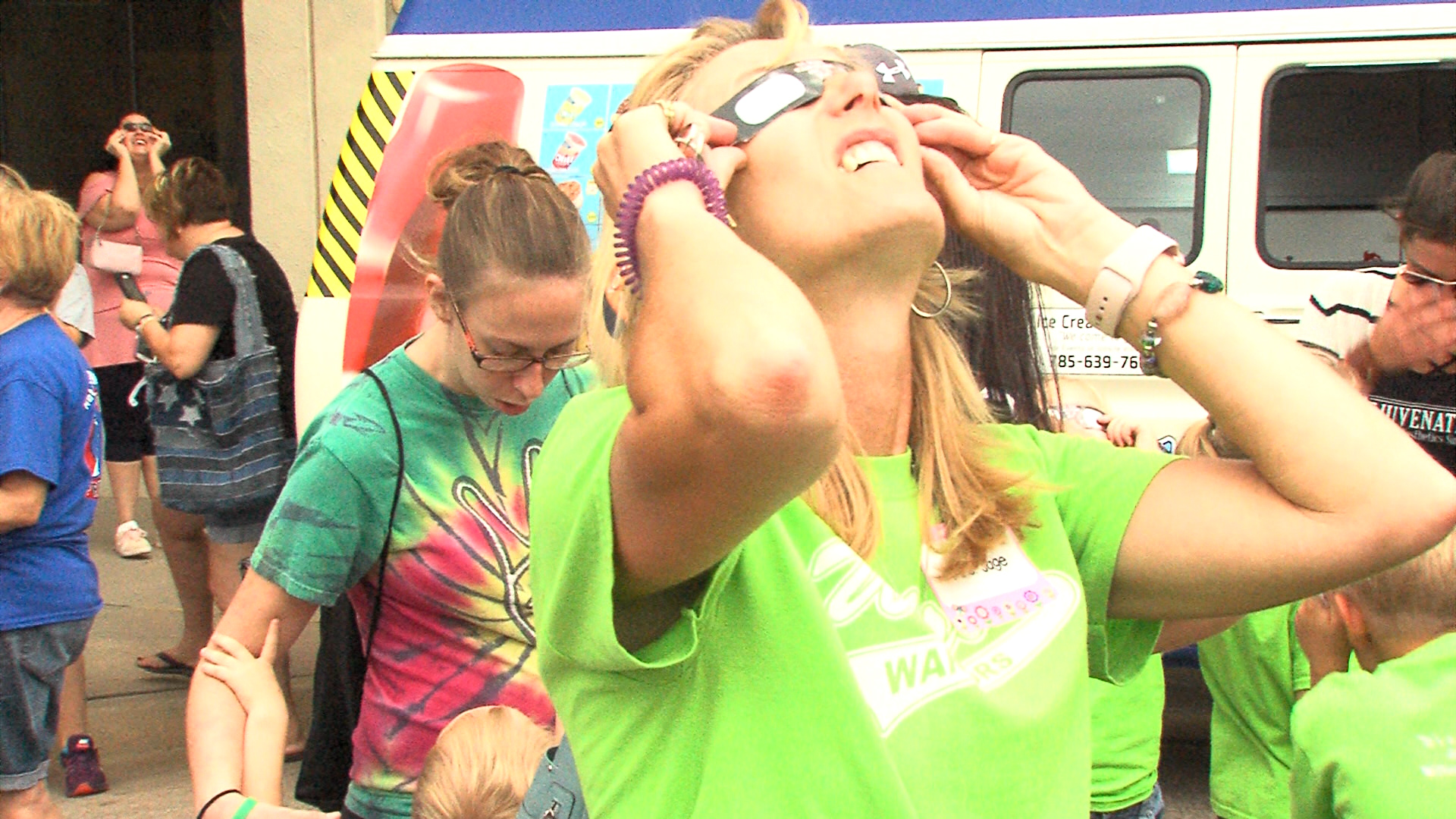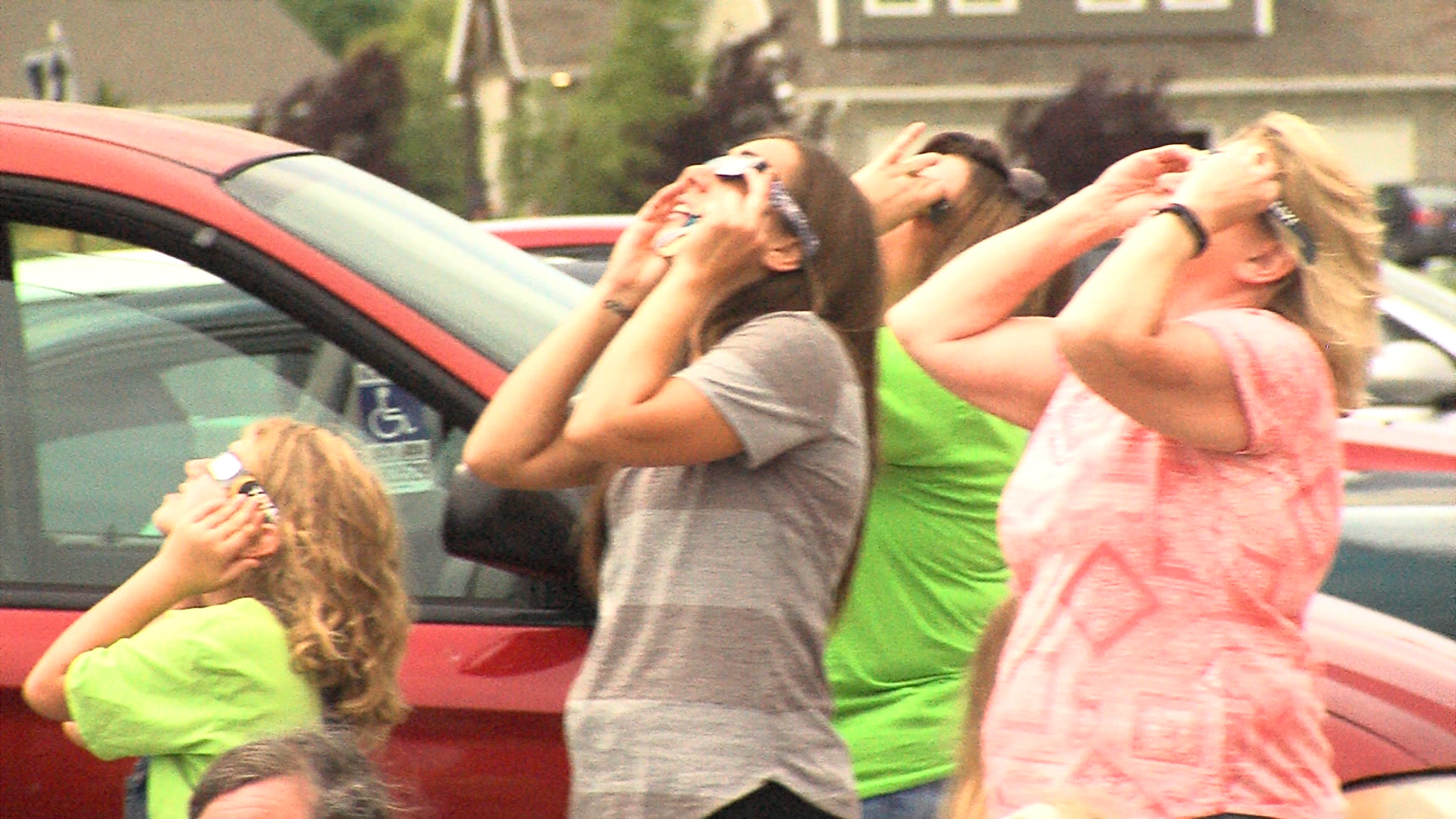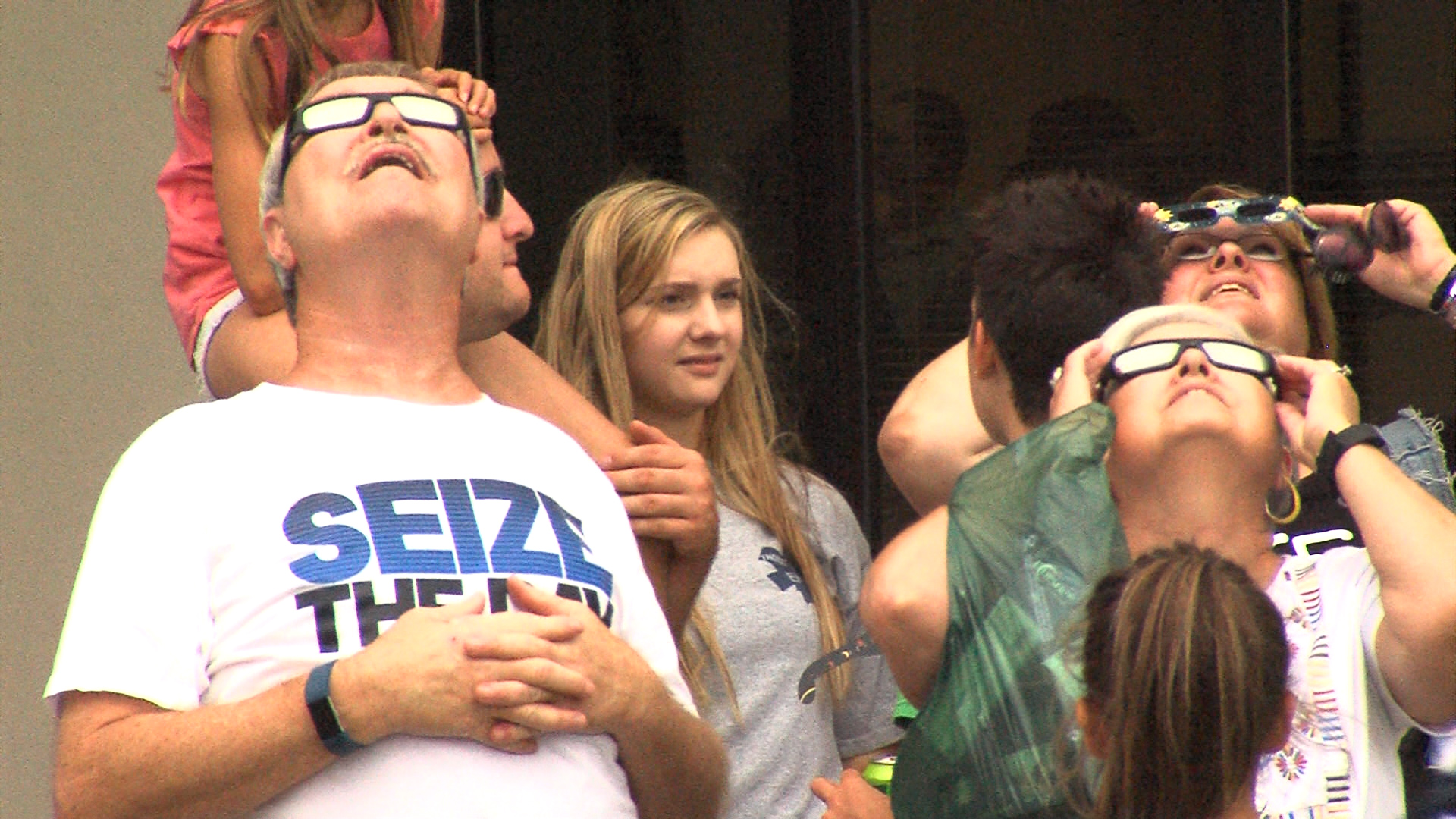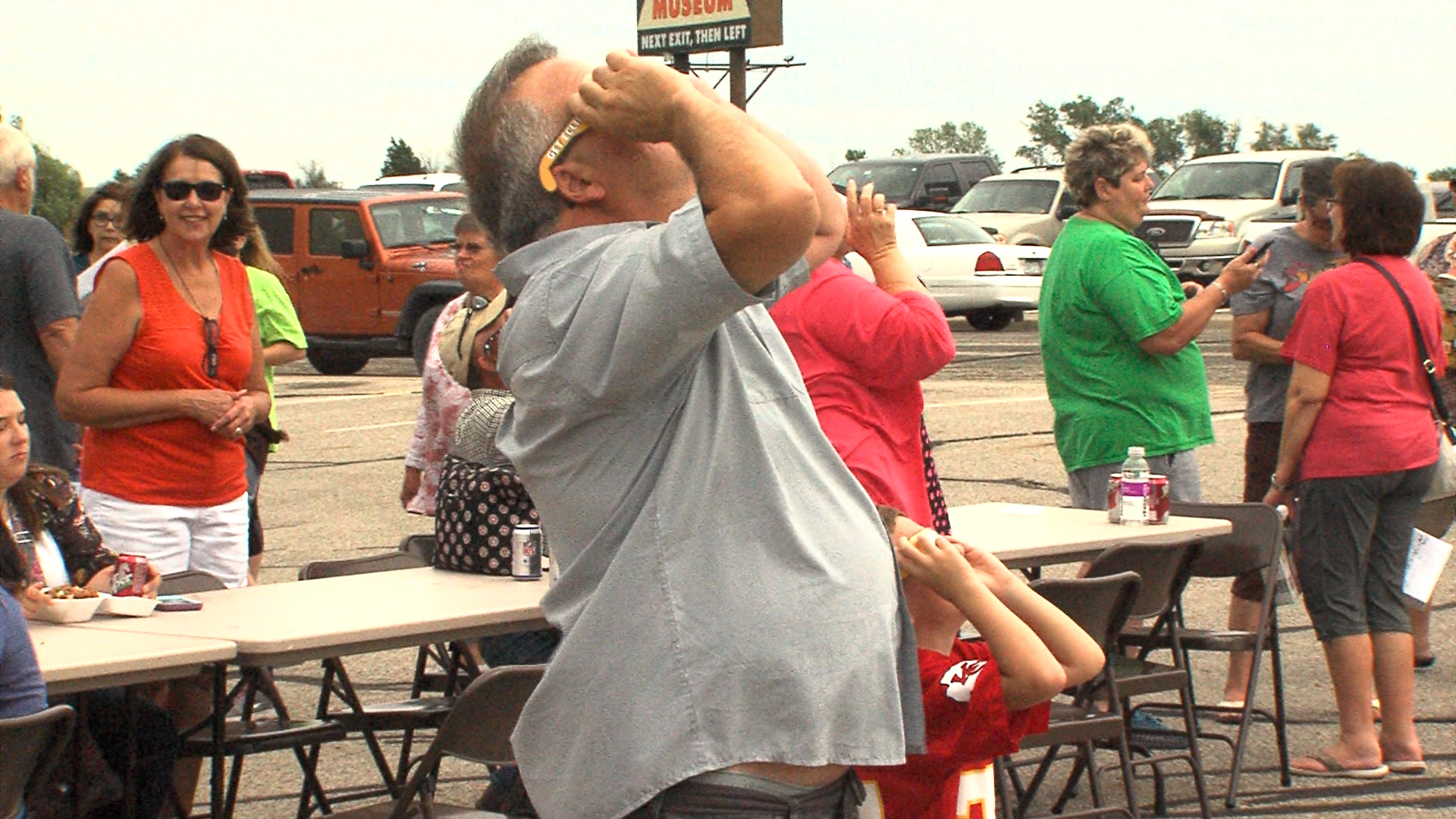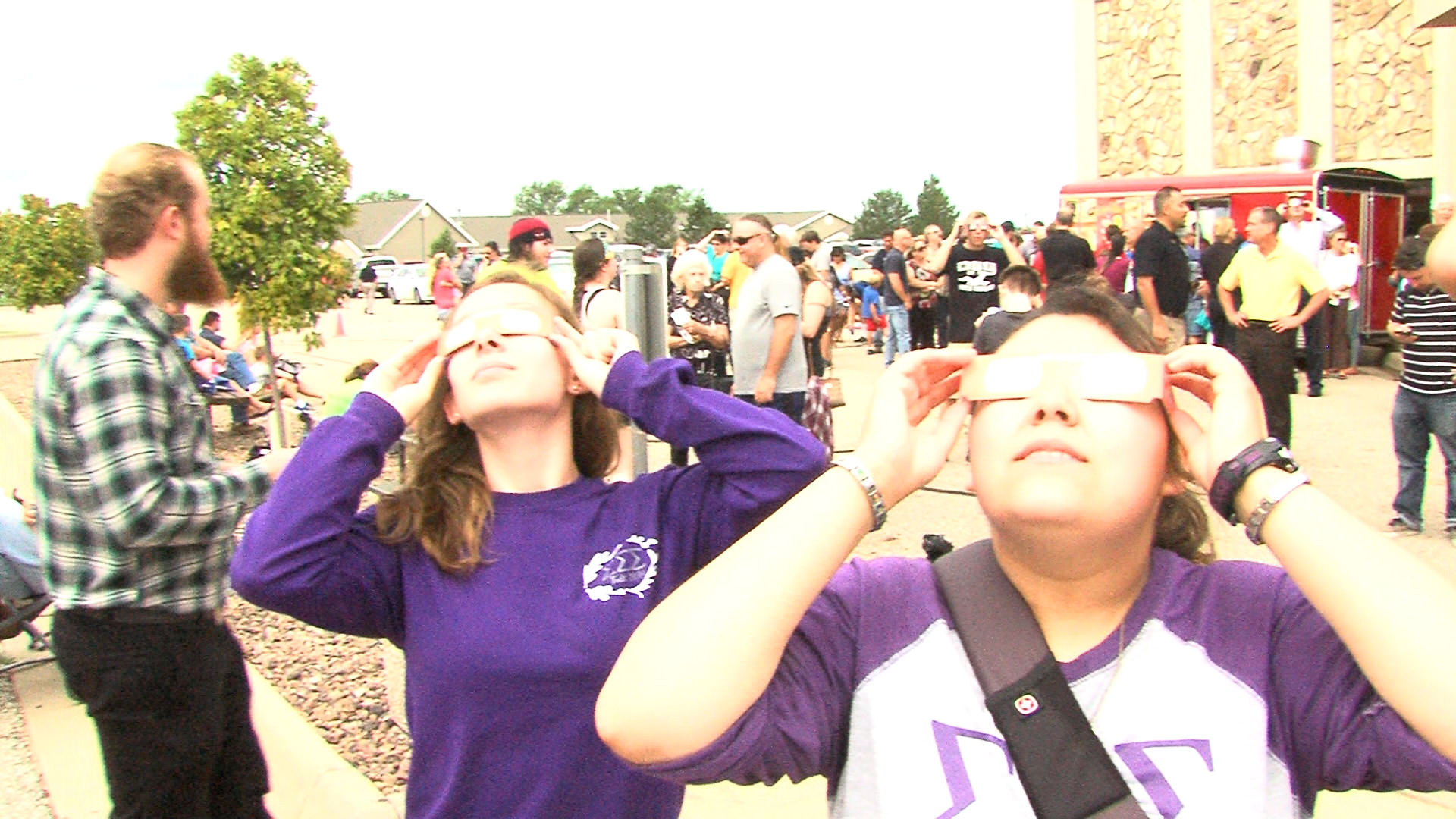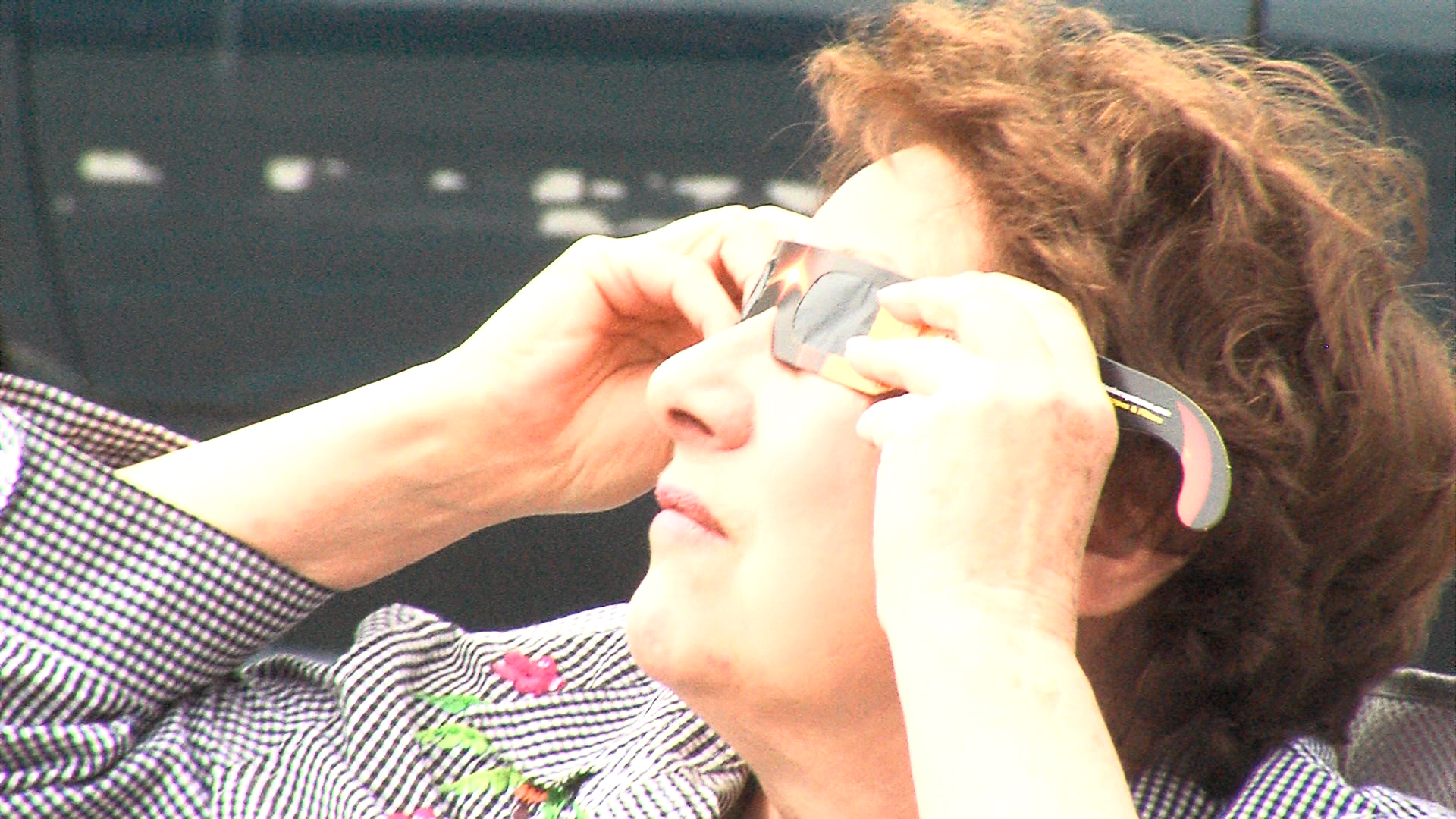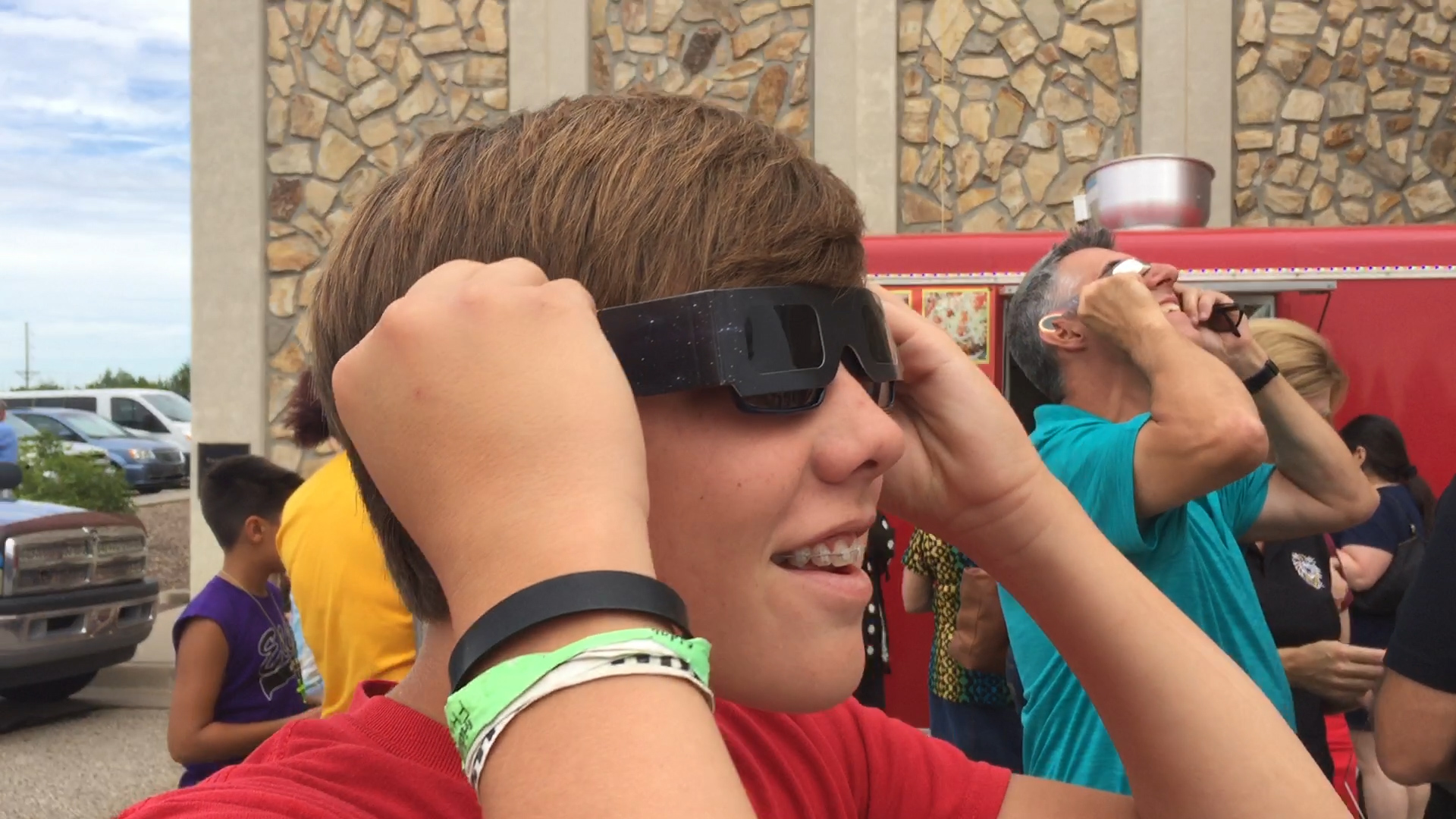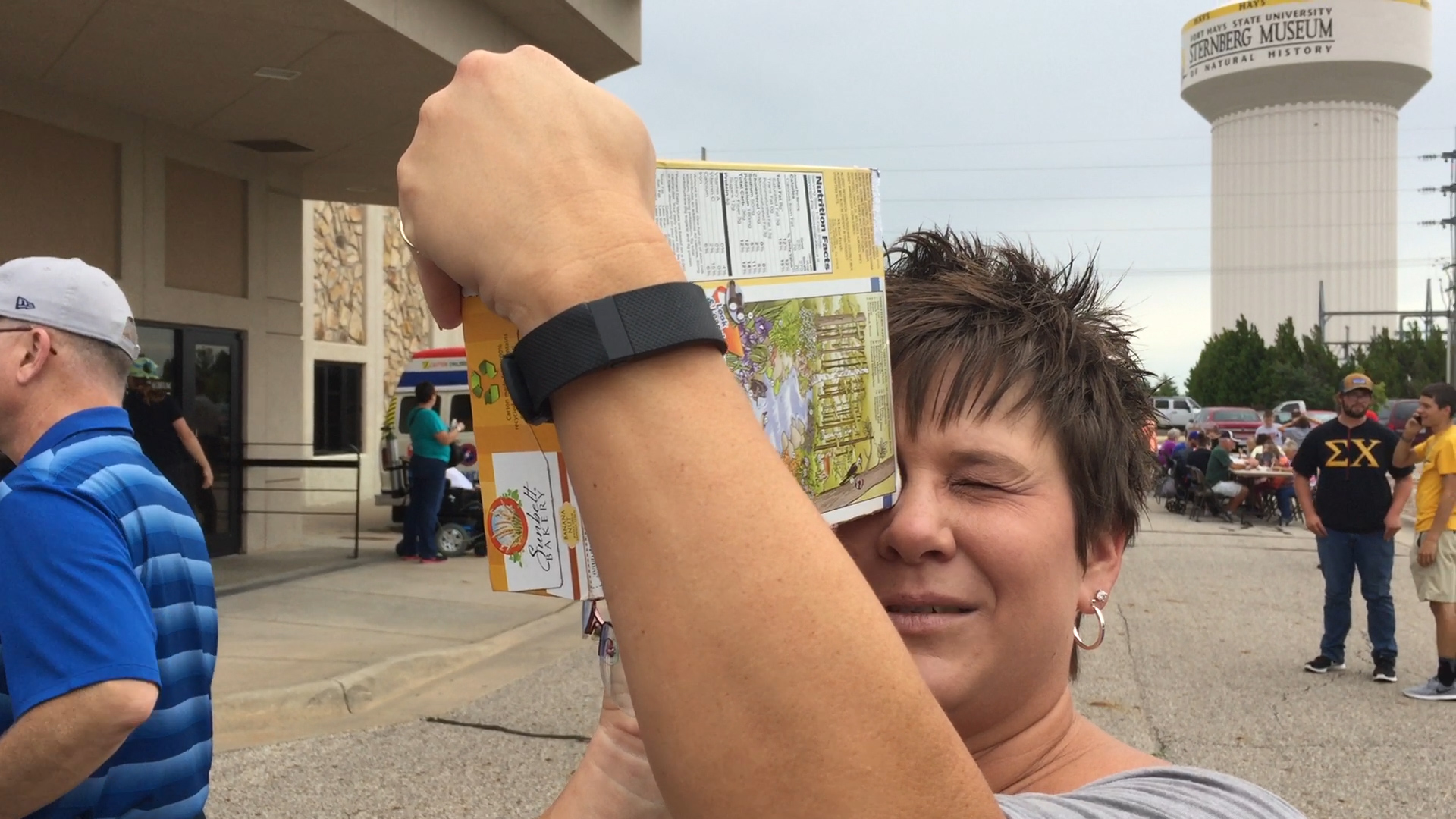
By BECKY KISER
Hays Post
You could just about feel the excitement and anticipation in the air Monday morning as people began gathering at 10 a.m. at the Sternberg Museum of Natural History in Hays to watch the first total solar eclipse to cross the entire United States in 99 years.

By 11:30 a.m. you could actually feel the rain drops falling from an overcast sky.
A few umbrellas popped up in the crowd, while some people headed straight inside the museum lobby where they could watch a live video feed by NASA and slip inside the inflatable planetarium to learn more about constellations in the fall sky.

Gail and Linda Palmberg, Yocemento, and their friend Karen Rankin, who is in the process of moving to Hays from Caney in southeast Kansas, stayed put in their portable chairs in the parking lot.
“I think it’s going to clear off and we’re going to see it,” Linda predicted.
And she was right.

About 12:12 p.m., the wind picked up and the clouds began to part. Even though the moon first began to cover the sun in Hays at 11:32 a.m., it was hard to discern because of the cloud cover.

Twelve-year-old Seth Tripp was ready for the big event with his handcrafted pinhole viewer made from an empty cereal box, one of several activities at Sternberg. Seth is a 7th grader at Hays Middle School who came with his family to the solar eclipse celebration.
“I learned about this in 5th and 6th grades and we’re probably gonna learn more about it now (in 7th grade.) I like science,” said Seth, who was wearing a constellation t-shirt.
Shawn Demuth, Hays, teaches K-6th grade music in Ellis. He was walking up to people he didn’t know, offering to share his solar sunglasses, a hot commodity since most places have been sold out for a while.
“You’ve seen it in pictures, you’ve seen videos and you’ve seen it on TV everywhere, but it’s just not as cool as seeing it in real life,” Demuth said.

Other types of viewing devices could be seen in the crowd including welding helmets, Sternberg’s solar viewing telescope, and large cardboard viewers which could be used to look through and as a filter over a camera phone.
Glen Teel was sharing two welding helmets. “They’re #12 shade, so you can’t look through them too long,” Teel cautioned those who took a peek at the sun. A #14 shade is the darkest shade made for a protective welding helmet.

“It’s the first day of classes and the end is here,” joked Fort Hays State University biology major Jon Beck, Seminole, Colorado. He and some friends were placing their solar sunglasses over the camera lens on their iPhones and using the Snapchat app to take pictures of the eclipse. “It’s pretty cool because you can see the sun through the clouds and it gives it a kind of misty, apocalyptic look to it,” Beck said.

Delilah Meyers, 9, was using the same technique. Delilah said her mom “actually got the day off for me from school so I could come do this. It’s pretty cool.”
The maxim eclipse in Hays occurred at 12:59 p.m. with 94.6% of the sun occluded. As she took another peek through her glasses “that let me look at the sun,” Delilah was sure the temperature felt cooler. “That’s because the sun is hidden by the moon and so it’s not shining down to make us hot,” explained the Lincoln School 4th grader.

Anna Luhman was also taking pictures with her phone during the darkest part of the eclipse in Hays. She plans on sharing them with her two sons Monday evening who are both astrophysicists and graduates of Hays High School
“I remember taking them outside all the time with their telescopes to look at the sky,” Luhman reminisced.

Kevin Luhman, 46, studies deep space with the Hubble and Kepler telescopes for NASA at Penn State. Michael Luhman, 52, is an astrophysicist for the Department of Defense in Alexandria, Virginia. “Hays High has had some good science graduates,” said Luhman.

By 2:27 p.m., it was back to normal in Hays with the full diameter of the sun’s disk emerging from behind the moon. The eclipse ended at 3:10 p.m. on the east coast in Charleston, South Carolina.
More than 600 people participated in paid activities inside Sternberg, according to Dean Zerr who was manning the visitors’ desk. He said many other people enjoyed the free events in the lobby and parking lot where there were also food trucks set up for the solar eclipse celebration.
People in the far northeast corner of Kansas were in the path of totality, meaning they witnessed the eclipse in its entirety.
Many people from Kansas traveled north to Nebraska to experience the totality. You can watch it below.
(Video by David Hawksworth, Eagle TV)
According to NASA, the last time a total solar eclipse occurred exclusively in the U.S. was in 1778. The next total solar eclipse will be visible in the United States on April 8, 2024.
